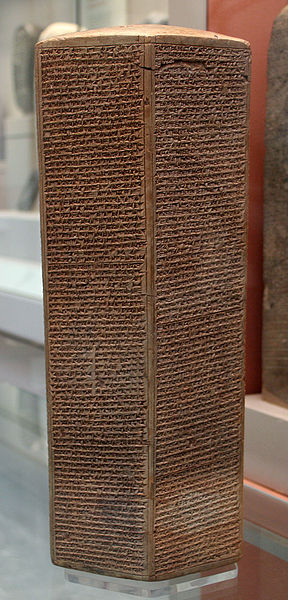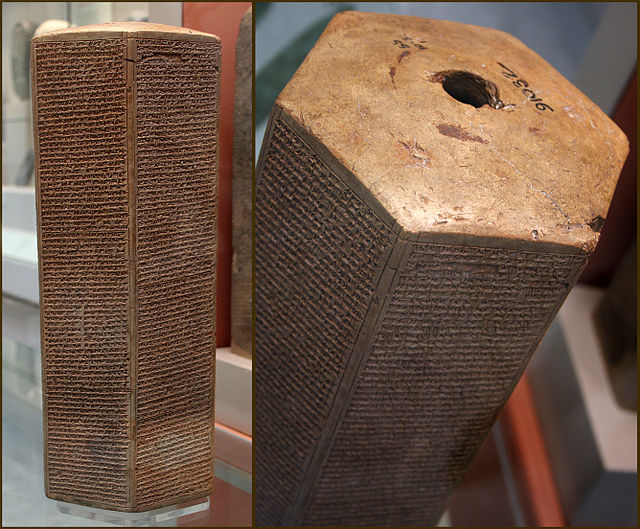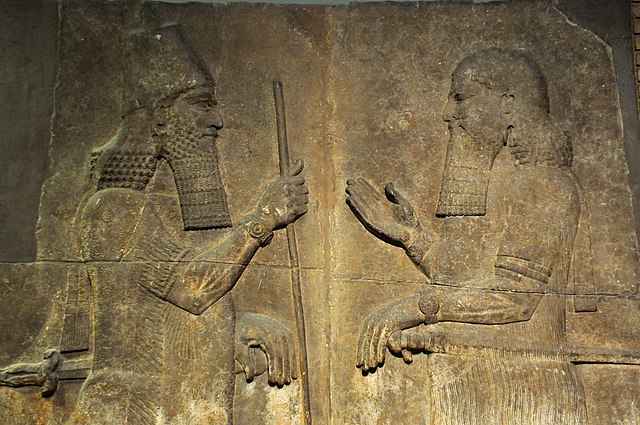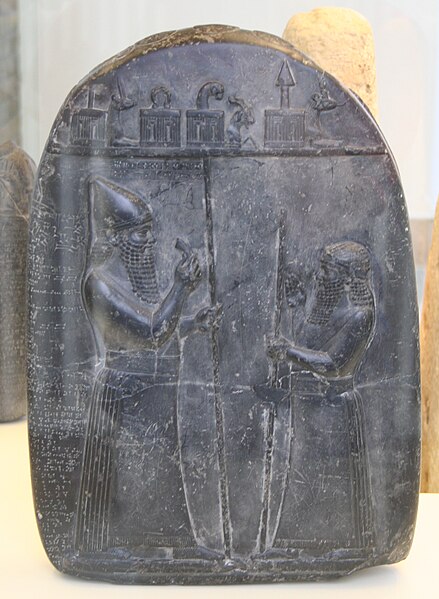Sennacherib's Annals are the annals of the Assyrian king Sennacherib. They are found inscribed on a number of artifacts, and the final versions were found in three clay prisms inscribed with the same text: the Taylor Prism is in the British Museum, the Oriental Institute Prism in the Oriental Institute of Chicago, and the Jerusalem Prism is in the Israel Museum in Jerusalem.
Image: Taylor Prism 1
Image: Six sided clay prism, side 3, written on behalf of Sennacherib, king of Assyria, and containing narratives of his military campaigns, 704 681 BC Oriental Institute Museum, University of Chicago DSC07602
Image: Sennacherib's Prism in the Israel Museum (2)
General view and detail of the Taylor prism, British Museum.
Sennacherib was the king of the Neo-Assyrian Empire from the death of his father Sargon II in 705 BC to his own death in 681 BC. The second king of the Sargonid dynasty, Sennacherib is one of the most famous Assyrian kings for the role he plays in the Hebrew Bible, which describes his campaign in the Levant. Other events of his reign include his destruction of the city of Babylon in 689 BC and his renovation and expansion of the last great Assyrian capital, Nineveh.
Cast of a rock relief of Sennacherib from the foot of Mount Judi, near Cizre
Alabaster bas-relief depicting Sargon II, Sennacherib's father and predecessor
Sennacherib's father Sargon II (left) facing a high-ranking official, possibly his crown prince Sennacherib
Depiction of Sennacherib's arch-enemy Marduk-apla-iddina II (left), king of Babylon 722–710 BC and 704/703–703 BC and the instigator of many of Sennacherib's later conflicts








